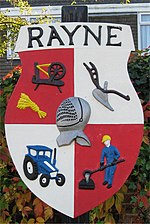Manshead CE Academy

Manshead CE Academy is a mixed Church of England secondary academy and sixth form located on the outskirts of both Caddington and Dunstable in Bedfordshire, England. The academy (surrounded by countryside and hills) is a member of the Diocese of St Albans Multi-Academy Trust. The academy is the modern successor to Dunstable Grammar School, which existed from 1881 to 1971 when Bedfordshire adopted the comprehensive education system. From this time, it was an upper school educating pupils aged 13–18, with Ashton Middle School in particular acting as a feeder school to Manshead. However, in September 2014, Manshead became a full secondary school accepting pupils at age 11. In May 2017, the school converted to a sponsored academy with the Diocese of St Albans Multi-Academy Trust. The academy is named after the ancient Manshead hundred which covered an area in the south-west of Bedfordshire and included Dunstable.
Excerpt from the Wikipedia article Manshead CE Academy (License: CC BY-SA 3.0, Authors, Images).Manshead CE Academy
The Flitch Way, Essex
Geographical coordinates (GPS) Address Nearby Places Show on map
Geographical coordinates (GPS)
| Latitude | Longitude |
|---|---|
| N 51.87277 ° | E 0.49613 ° |
Address
The Flitch Way
The Flitch Way
CM77 6SW Essex, Rayne
England, United Kingdom
Open on Google Maps








